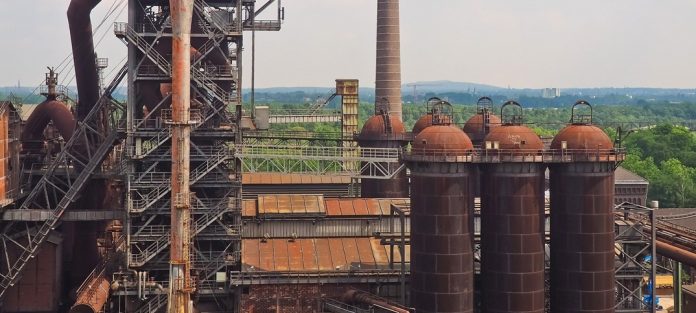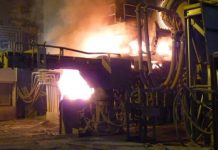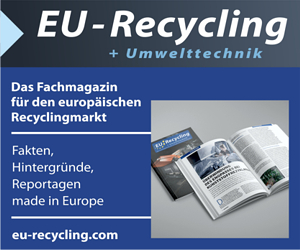The World Steel Association (worldsteel) today released an update of its Short Range Outlook (SRO) for 2021 and 2022. worldsteel forecasts that steel demand will grow by 4.5% in 2021 and reach 1,855.4 Mt after 0.1% growth in 2020. In 2022, steel demand will see a further increase of 2.2% to 1,896.4 Mt. The current forecast assumes that, with the progress of vaccinations across the world, the spread of variants of the Covid virus will be less damaging and disruptive than seen in previous waves.
Commenting on the outlook, Mr Al Remeithi, Chairman of the worldsteel Economics Committee, said: “2021 has seen a stronger than expected recovery in steel demand, leading to upward revisions in our forecast across the board except for China. Due to this vigorous recovery, global steel demand outside China is expected to return earlier than expected to its pre-pandemic level this year.
Strong manufacturing activity bolstered by pent-up demand is the main contributor. The developed economies have outperformed our earlier expectations by a larger margin than the developing economies, reflecting the positive benefit of higher vaccination rates and government support measures. In the emerging economies, especially in Asia, the recovery momentum was interrupted by the resurgence of infections.
While the manufacturing sector’s recovery remained more resilient to the new waves of infection than expected, supply-side constraints led to a levelling off of the recovery in the second half of the year and are preventing a stronger recovery in 2021. But with high backlog orders combined with a rebuilding of inventories and further progress in vaccinations in developing countries, we expect steel demand will continue to recover in 2022.
Persistent rising inflation, continued slow vaccination progress in developing countries and further growth deceleration in China all pose risks to this forecast.”
China
The Chinese economy sustained its strong recovery momentum from 2020 into the early part of 2021. However, it has slowed since June. There have been marked signs of deceleration in the steel using sector’s activity since July, leading to a steel demand contraction of -13.3% in July and then -18.3% in August. The sharp deceleration is partly attributable to occasional factors such as the recent adverse weather and small waves of infections through this summer, however more substantive causes include the slowing momentum in the real estate sector and the government cap on steel production. Real estate activity has weakened due to tough government measures on developers‘ financing introduced in 2020. At the same time, infrastructure investment has not picked up in 2021 due to a depletion of investment opportunities and limited local government financing ability. Furthermore, the strong manufacturing recovery across the world has reduced the export market.
From a high base last year and with a continued negative trend in the real estate sector, Chinese steel demand will have negative growth for the rest of 2021. As a result, while the January to August apparent steel use still stands at a positive 2.7%, overall steel demand is expected to decline by -1.0% in 2021. No growth in steel demand is expected in 2022, with the real estate sector remaining depressed in line with the government policy stance on rebalancing and environmental protection. Some restocking activities might support apparent steel use. Recent government action to push for a transition away from the real estate-dependent growth model is likely to continue.
Developed economies
More targeted and localised lockdowns helped to minimise the impact of the latest infection waves on economic activities in 2021. However, supply chain bottlenecks and the services sector still lagging behind are preventing a more robust recovery. A reduction in supply chain bottlenecks, continued pent-up demand and rising business and consumer confidence, will strengthen the recovery momentum in 2022. After falling by -12.7% in 2020, steel demand will increase by 12.2% in 2021 and 4.3% in 2022, reaching its pre-pandemic level.
In the US, the economy continues its robust recovery, driven by pent-up demand and a vigorous policy response. The level of real GDP exceeded its previous high in the second quarter of this year. Steel demand was aided by the strong performance of the automotive and durable goods sectors, but shortage of some components is undermining this recovery. The momentum in the construction sector is weakening with the end of a residential construction boom and sluggish non-residential sector activities. The recovery in oil prices is supporting a recovery in energy sector investment. There could be more upside potential if President Biden’s infrastructure stimulus programme is enacted, but this would not feed through until late 2022.
In the EU, the recovery in steel demand that started in the second half of 2020 is gathering pace, with all steel-using sectors exhibiting a positive recovery despite continuing waves of infection. Germany’s steel demand recovery is supported by exports, which underlie its strong manufacturing performance. However, supply bottlenecks, particularly in the automotive sector, are causing a loss of momentum. Steel demand in 2022 will benefit from a high order backlog in the manufacturing sector while the construction sector is expected to continue to grow after showing relatively high growth performance throughout the pandemic. Italy, one of the hardest hit by the pandemic in the EU, is recovering faster than other EU countries, with strong recovery in construction. Several steel using sectors, including construction and domestic appliances, are expected to recover to a pre-Covid level in 2021.
In developed Asia, the Covid situation worsened in 2021, exacerbated by slower vaccination progress, but steel demand recovery was not interrupted and the forecast has been revised up, helped by the strong rebound in global trade and government infrastructure programmes.
In Japan, steel demand is recovering gradually with increasing exports, investment and consumption. Manufacturing, especially automotive and machinery, is leading the recovery. Civil construction continues to underpin steel demand, while private construction remains subdued, with the exception of warehouses and distribution centres. In 2022, recoveries in consumption and investment are expected to support positive growth in all steel using sectors.
South Korea is expected to see its steel demand recovering to the 2019 level in 2021, supported by improving exports and investment in manufacturing facilities. The construction sector will be supported by public civil engineering programmes and residential construction recovery, switching to positive growth in 2021/22. South Korea saw a jump in new shipping orders in 2021, which will boost Korea’s steel demand for the coming years.
Developing economies excluding China
Steel demand in the developing economies excluding China continued to recover in 2021, aided by the recovery in commodity prices and international trade. However, new COVID waves combined with low vaccination levels and a slow recovery in international tourism restrained developing economies. In 2022, as vaccinations progress, conditions in the developing economies are expected to improve, but the pandemic will leave a lasting impact on these economies through weakened financial positions and accumulated structural challenges.
While on track to a healthy recovery from the strict lockdown in 2020, India’s economy got another shock from a more severe second wave in April-June, 2021, which caused output across all sectors to fall. However, the economic impact of the second wave was much less severe compared with the first wave, due to more localised lockdowns. Since July, a healthy recovery has resumed for all sectors. As a result, India’s steel demand suffered only a minor downward revision and will show a strong recovery in 2021. India’s steel demand will reclaim the 100 million tonnes mark this year.
In the ASEAN region, Vietnam, which had successfully escaped the serious economic impact of the pandemic in 2020, is looking at a scaled-down outlook for 2021 due to surging infections. On the other hand, the Philippines has managed to implement construction projects despite the Covid restrictions. With delayed infrastructure projects and restricted labour mobility, the ASEAN region’s recovery is expected to be only moderate.
Steel demand in Latin America, except Brazil, was severely hit by the pandemic in 2020. But in 2021 a surprisingly strong recovery has been taking place, due to the construction and automotive sectors and inventory rebuilding. However, in 2022, the region could see markedly weakened momentum as it will struggle with compounded structural issues including high inflation, heightened fiscal deficits and political uncertainty.
After recording positive growth in 2020, Brazil’s steel demand continues to grow strongly in 2021, driven by government stimulus and strong construction activity, which stood above its pre-pandemic level in the first half of the year. However, the outlook for 2022 is set to weaken with fiscal weakness, higher interest rates and political tensions. Mexico also saw a substantially stronger than expected recovery driven by industrial activities, especially the automotive sector.
Steel demand recovery in the GCC fell short of expectations on the back of reduced construction activity due to fiscal consolidation efforts. However, in 2022, with rising oil prices and the pandemic under control, steel demand is expected to rebound more strongly. Egypt’s steel demand was negatively affected by the suspension of construction licenses in overcrowded urban areas. However, the government’s other mega projects have cushioned the pandemic’s impact and have supported recovery in 2021.
After a moderate fall in 2020, Russia’s steel demand’s recovery is supported by a strong rebound in the automotive sector. The construction sector is supported by the government mortgage subsidy programme.
The strong positive trend in the Turkish economy that started in Q3 2020 continued in 2021, driven by domestic demand with expanding consumer loans. Turkish steel demand will continue to show high double-digit growth in 2021, driven by infrastructure projects and industrial activity. Turkey’s steel demand will exceed the pre-currency crisis level of 36 Mt in 2022.
Steel using sectors
Construction
In general, the construction sector has remained more resilient than the manufacturing sector to the pandemic shock. However, in many developing economies, construction activity was severely disrupted by a total stoppage of projects. In 2021, the global construction sector is expected to show a robust recovery fuelled by low interest rates and governments focusing on infrastructure projects as part of their recovery plans.
The recovery of the construction sector is uneven across regions. In developing economies, ASEAN for example, where vaccination rates have been low, construction recovery has shown fragility. In contrast, in India, where there was recently a strong uptake in vaccinations, a positive rebound in construction activity is taking place.
In China, the construction sector is facing a turning point and the real estate sector is likely to enter a correction period as the government tries to tackle the sector’s structural problems.
The outlook for global infrastructure projects is affected by two conflicting forces. On the one hand, many governments are trying to use infrastructure as a recovery tool aligned with green initiatives, especially in the developed economies. On the other hand, governments’ fiscal position has worsened due to the pandemic. Many governments in developing economies will have reduced ability for financing infrastructure investment.
The residential sector has benefited from accumulated savings during the lockdown and the spread of working from home, which has resulted in rising demand for home space. The other side of the coin is that the non-residential sector will see a sluggish recovery due to reduced demand for office space.
Automotive
The automotive sector, which saw the sharpest decline among the steel using sectors during the lockdown in 2020, saw a strong recovery in the second half of 2020. Although supply chain disruption is still evident in some markets, the recovery is driven by pent-up demand and increased household savings.
In the US, light vehicle production regained its pre-pandemic level by the third quarter of last year, but it has been trending down since then, partly because of supply chain disruptions.
In the EU, a strong recovery is underway, and the EU automotive sector is expected to rebound by 15.3% in 2021. However, it is still far below its level when the manufacturing recession first started in 2018. The EU’s automotive sector faces uncertainty with component shortages and a weak prospect of demand due to general economic uncertainty.
In China, automobile production soared in the first half of this year. In particular, new energy vehicle production increased by almost 200% from January to August 2021, accounting for 11.2% of total vehicles produced in the same period.
The disruption in the supply chain is significantly undermining the global automotive industry’s recovery. With pent-up demand dissipating, the growth in auto production in 2022 will decelerate, though high order backlogs will provide some support.
Source: worldsteel








